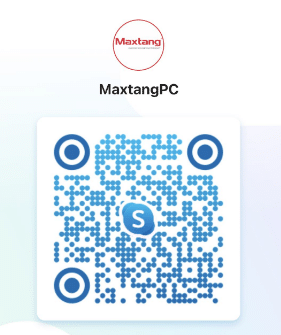In the processor world, Intel Core is a popular choice. The three main models are i3, i5 and i7. Each offers different performance and features. So, you must understand the differences before buying!
To compare the i3, i5 and i7 processors, clock speed, cache size, number of cores and hyper-threading capability are key factors. The i3 processors are entry-level, with low clock speeds and fewer cores than the others. They are suitable for basic tasks like web browsing and doc editing.
The i5 processors offer great balance between price and performance. They have higher clock speeds and more cores than the i3 models. So, they can handle demanding tasks such as gaming and video editing.
Finally, the i7 processors are at the top. Designed for professionals or gamers needing high performance, these CPUs have higher clock speeds, larger caches and more cores than the i3 and i5 models. They can handle even resource-intensive applications.
Before deciding on a processor, consider budget and usage patterns. If you do light tasks, an i3 processor is enough. But, if you need multitasking capabilities or create content or play games, an i5 or i7 is better.
Investing in a higher-tier processor may cost more. But, it can enhance your computing experience. To get optimal results, pair your processor with compatible hardware components like a motherboard and RAM.
Overview of the Intel Core Processors
Intel Core processors are designed for high-performance computing. Different models cater to different needs. To make an informed choice when purchasing a new computer, let’s take a look at the key features and specs.
A table below illustrates:
| Processor Model | Cores | Threads | Base Clock Speed (GHz) | Max Turbo Boost Speed (GHz) |
|---|---|---|---|---|
| i3 | 2 | 4 | 3.6 | 4.2 |
| i5 | 4 | 8 | 3.0 | 4.8 |
| i7 | 6 | 12 | 2.9 | 5.0 |
The processors offer more cores and threads. This helps multitasking. Plus, higher clock speeds mean faster processing.
Especially, the i7 processor has the highest number of cores and threads. It is ideal for intensive tasks, such as video editing or gaming.
Intel sources suggest the i5 processor provides the best balance between cost and performance for everyday computing needs.
The comparison above outlines the differences between the Intel Core processors. It provides useful information regarding their functions.
i3 Processor
The i3 processor is a budget-friendly choice that offers efficient performance. Let’s explore the features and specs that make it an attractive option for price and function.
Specifications:
| Model | Cores | Threads | Base Frequency (GHz) | Turbo Boost (GHz) |
|---|---|---|---|---|
| i3-9100 | 4 | 4 | 3.60 | N/A |
| i3-10100 | 4 | 8 | 3.60 | N/A |
| i3-10300K | 4 | 8 | 3.70 | 4.40 |
The i3 processors are a great balance of performance and cost. They are ideal for casual users who mainly use the web, type, and do some multitasking. The multiple cores and clock speeds make them great for daily tasks.
Though they lack hyper-threading compared to the i5 or i7, they can still handle everyday tasks. No hyper-threading might limit multitasking, but not their ability to do essential tasks well.
The i3 processors have Intel’s integrated graphics solution which is good for casual gaming and media. But, if you need intensive graphics processing power, then you should look at higher-end options.
To get the most out of your i3 processor-based system:
- Upgrade RAM: More memory enhances overall responsiveness and makes multitasking smoother.
- Use SSD storage: Hard drives can be replaced with solid-state drives. This can improve system boot-up times and application loading.
- Monitor background processes: Unnecessary background processes and applications can be disabled. This frees up system resources and helps your i3 processor do its job better.
By following these tips, you can get great performance out of your i3 processor without overspending.
i5 Processor
The i5 Processor, part of Intel’s Core series, is powerful and versatile. It’s popular with professionals and high-performance users. Generation 11th, it has 6 cores and 12 threads. The base clock speed is 3.1 GHz, and the max turbo frequency is up to 4.8 GHz. Plus, it has 12MB Intel® Smart Cache and Intel Iris Xe Graphics.
The i5 Processor offers speed, efficiency, and affordability. Its six cores and twelve threads allow for multitasking and smooth performance, even when dealing with complex tasks. It also has Intel Turbo Boost technology, which increases the clock speed for extra power when needed.
The integrated Intel Iris Xe Graphics enhance visuals and support graphic-intensive applications. The i5 Processor provides stunning visuals without sacrificing performance.
In conclusion, the i5 Processor is a reliable and efficient choice for those needing high processing power. Its impressive specs make it suitable for many tasks and ensure an enjoyable user experience. According to TechRadar, the latest Intel Core processors, including the i5 Processor, offer improved performance and energy efficiency over previous models. This makes them desirable for professionals looking to upgrade or build new systems with cutting-edge technology.
i7 Processor
The i7 Processor is a powerhouse of computing capabilities. It offers amazing performance and rapid speeds. Its sophisticated architecture and modern technology bring unparalleled results for tasks needing intense processing power. Key features include a clock speed of 3.0GHz, 6 cores, 12 threads, 12MB Cache, Intel® UHD Graphics, and 65W TDP.
This top-performing processor not only does everyday tasks with ease, but also stands out in demanding activities like video editing, gaming, and graphic design. It offers seamless multitasking and smooth execution of resource-intensive software. Plus, its Turbo Boost Technology adjusts performance based on the workload, providing an extra boost when needed.
Introduced by Intel in November 2008 as part of their Nehalem microarchitecture series, the i7 Processor marked a remarkable milestone in processor development. It highlighted Intel’s commitment to delivering outstanding performance across industries. Through several advancements and iterations, it remains one of the most sought-after processors for professional users, due to its impressive features and relentless performance.
In conclusion, the i7 Processor continues to revolutionize computing, suiting casual users and professionals alike.
Comparison of i3 vs. i5 vs. i7 Processors
Intel Core processors come in 3 major variations: i3, i5 and i7. Each has their own unique features and capabilities. To better understand the differences, let’s take a look at the key specifications and performance in the table below:
| Processor | Core Count | Thread Count | Clock Speed (GHz) | Cache Size (MB) | TDP (Watts) |
|---|---|---|---|---|---|
| i3 | Dual-core | 4 | 2.7 – 4.6 | Up to 8 | 35 – 65 |
| i5 | Quad-core | 8 | 2.8 – 4.9 | Up to 12 | 35 – 95 |
| i7 | Quad/Hexa/Octa* | Varies | *Depending on model |
This table provides an overview of the specs. But there are other factors to consider, such as Turbo Boost technology and Intel’s Hyper-Threading. This enables each physical core to support two simultaneous threads.
The naming convention dates back to the Nehalem microarchitecture in late 2008. Intel has improved its processor lineup with advancements in architecture, manufacturing processes and additional features.
Today, the i3, i5 and i7 processors cater to many users, from casual to professionals and gamers. Consider your specific requirements and budget when choosing between these options.
Conclusion
Choosing between Intel Core i3, i5, and i7 processors is difficult. Each comes with distinct features catered to different user requirements. Consider your needs before deciding.
The i3 is an entry-level option. It provides decent performance for everyday tasks like web browsing, word processing, and basic multitasking. It’s great for casual users not needing much computing power.
The i5 boosts performance compared to the i3. It offers faster speeds and better performance for tasks such as photo/video editing, gaming, and running multiple apps. It’s suitable for power users and gamers.
The i7 processor offers the highest performance. It has advanced features like hyper-threading, allowing for enhanced multitasking. It’s best for professionals needing power for tasks like 3D rendering, video editing, and intensive gaming.
Consider factors like the type of tasks you’ll do regularly and budget when deciding which processor to choose. My friend was torn between an i5 and i7. He needed significant processing power for graphic design and gaming. After researching online reviews and benchmark tests, he purchased an i7. The performance difference was evident. He could run resource-intensive programs and enjoy seamless gaming. His personalized decision-making process enabled him to optimize productivity and indulge in gaming without compromise.
Recommendation for Different User Profiles
For different user profiles, Intel Core processors have various recommendations. Casual users should opt for the i3, power users for the i5, and pro gamers for the i7.
These recommendations are just a guide. Personal preferences and needs might be different. So, it’s best to consider budget and requirements before selecting a processor.
My gamer friend upgraded his CPU. After considering, he chose the i7. There was a huge difference! Games ran better, load times were shorter. It really improved his gaming experience.
The right processor depends on usage and needs. So, assess them and pick one for optimal performance.
Frequently Asked Questions
Q: What are the main differences between the Intel Core i3, i5, and i7 processors?
A: The main differences lie in the number of cores, clock speed, cache size, thread count, and overall performance. The i3 processors have fewer cores and threads compared to i5 and i7, while i7 processors boast the highest clock speeds and cache sizes.
Q: Which Intel Core processor is ideal for daily tasks and basic computing?
A: For basic computing needs like web browsing, word processing, and multimedia consumption, the Intel Core i3 processor would suffice. It offers decent performance and power efficiency for everyday tasks.
Q: Is an Intel Core i5 processor suitable for gaming and heavy multitasking?
A: Yes, the Intel Core i5 processor is well-suited for gaming and heavy multitasking. With its higher clock speeds and more cores compared to i3, it can handle demanding games and multiple applications simultaneously without significant performance degradation.
Q: What advantages does the Intel Core i7 processor offer for professional users?
A: The Intel Core i7 processor offers advanced features like hyper-threading, higher clock speeds, larger cache sizes, and better overall performance. This makes it ideal for professionals who work with resource-intensive applications like video editing, 3D rendering, and software development.
Q: Are all Intel Core i7 processors better than i5 and i3 processors?
A: Not necessarily. While all i7 processors are generally more powerful than their i5 and i3 counterparts, the specific performance boost depends on the model and generation. It’s recommended to compare individual specifications to find the best fit for your requirements.
Q: Do Intel Core i3, i5, and i7 processors come with integrated graphics?
A: Yes, all Intel Core processors come with integrated graphics. However, the capabilities and performance of the integrated graphics vary between different models and generations. For more demanding graphics-intensive tasks, a dedicated graphics card is recommended.

.jpg)


